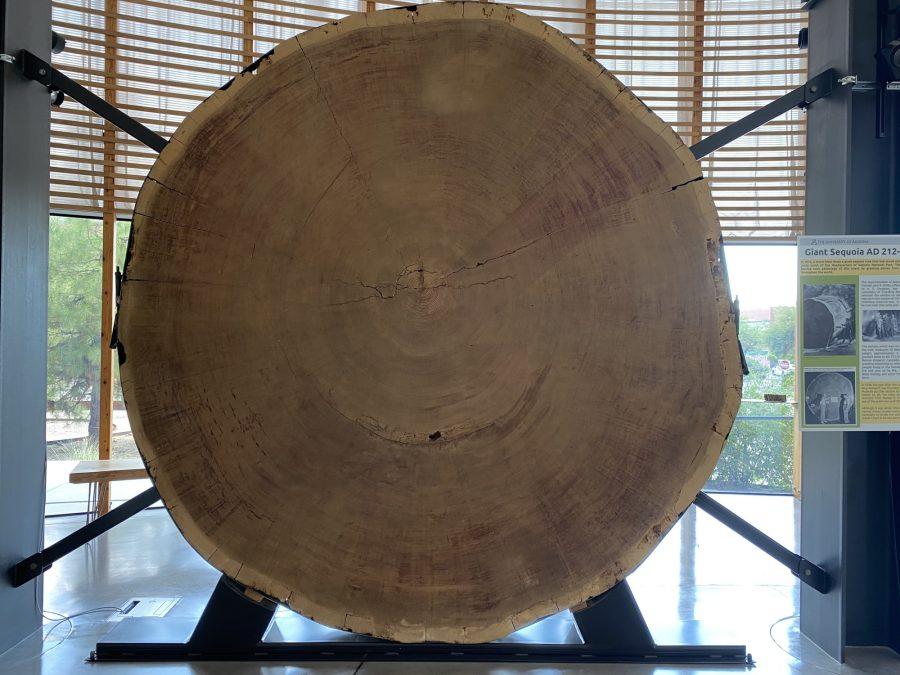The Bannister Building looks distinct among the typical red-brick buildings on campus, yet students walking by, preoccupied by their phones and classes, fail to notice the 40-foot-long steel columns suspended from the building.
Wooden artifacts like a violin and wood samples the size of a dinner plate are scattered throughout the lobby, which would normally be open to the public if it weren’t for COVID-19.
But hiding in the basement, home of the University of Arizona Laboratory of Tree-Ring Research, is the largest collection of tree-ring samples in the world.
The world-renowned research facility that studies tree samples from around the globe, received a grant of $100,180 from the National Parks Service to conserve and catalog 210 linear feet of samples of iconic tree-rings according to the lab’s website.
The samples are archived in shelves double the size of a full-grown man. The stark fluorescent-lit archive smells like an old, neglected high school woodshop, even though the facility was built just nine years ago.
“One of the main points of the archive is to allow us to reuse the samples,” said Curator of Collections Peter Brewer.
To do this, they need to “gather as much information as possible,” so it can be cross-referenced to other research topics, from dendroarchaeology to climate analysis.
Brewer said it can take hours to days to catalog and archive the samples. Cataloging samples requires knowledge of the tree species, location where the sample was taken, the date and who collected it among other tedious factors, he said.
They received samples from decades ago where the only description from the sample’s location was “over from the white rock where we had lunch yesterday,” said Martin Munro, a senior research specialist at the lab.
Ramzi Touchan, a research professor, showed a booklet that scientists now use to track the exact location of tree samples taken in the field. He used it while sampling trees in the Mediterranean a few years ago.
Archiving the samples properly is important for future research conducted too, according to Brewer.
Brewer pointed out the 42 boxes of archived Sequoia samples stacked up to the ceiling. Each box had an image of the tree species on the outside, and below them were hundreds more samples waiting to be organized with small, white identification cards nailed into their sides.
When opened, the boxes contain trimmed pieces of the core that assemble like a puzzle. Individually they are around 14 inches long, but when put together the samples create a five-meter-wide piece of wood, on which two students could lay down head-to-toe comfortably.
“[Munro and Touchan] are fantastic scientists,” Brewer said, “but that’s the stuff they need to focus on … you need a librarian to get everything organized.”
The Laboratory of Tree-Ring Research researches dendroarchaeology using Giant Sequoia samples from California. Researchers use the cores to study environmental trends across thousands of years of history by studying burn scars and spacing between the rings.
“When you have two millennia of information, you can look at events from the past and compare it to the present,” Touchan said. “The tree rings evolve to show the difference between the past and the present. That’s how we can learn about climate change.”
Follow Jane Florance on Twitter















